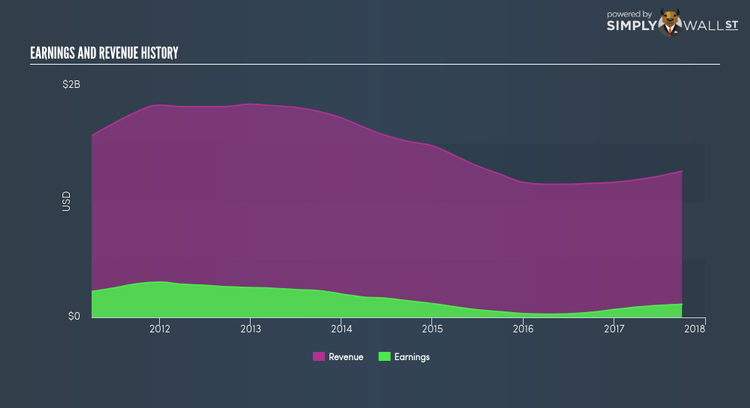What Are The Drivers Of Weight Watchers International Inc’s (NYSE:WTW) Risks?

If you are looking to invest in Weight Watchers International Inc’s (NYSE:WTW), or currently own the stock, then you need to understand its beta in order to understand how it can affect the risk of your portfolio. The beta measures WTW’s exposure to the wider market risk, which reflects changes in economic and political factors. Not all stocks are expose to the same level of market risk, and the broad market index represents a beta value of one. A stock with a beta greater than one is expected to exhibit higher volatility resulting from market-wide shocks compared to one with a beta below one.
See our latest analysis for Weight Watchers International
What is WTW’s market risk?
Weight Watchers International’s five-year beta of 3.37 means that the company’s value will swing up by more than the market during prosperous times, but also drop down by more in times of downturns. This level of volatility indicates bigger risk for investors who passively invest in the stock market index. Based on this beta value, WTW will help diversify your portfolio, if it currently comprises of low-beta stocks. This will be beneficial for portfolio returns, in particular, when current market sentiment is positive.
Could WTW’s size and industry cause it to be more volatile?
With a market capitalisation of US$4.77B, WTW is considered an established entity, which has generally experienced less relative risk in comparison to smaller sized companies. However, WTW operates in the consumer services industry, which has commonly demonstrated strong reactions to market-wide shocks. Therefore, investors can expect a low beta associated with the size of WTW, but a higher beta given the nature of the industry it operates in. This is an interesting conclusion, since its size suggests WTW should be less volatile than it actually is. There may be a more fundamental driver which can explain this inconsistency, which we will examine below.
How WTW’s assets could affect its beta
During times of economic downturn, low demand may cause companies to readjust production of their goods and services. It is more difficult for companies to lower their cost, if the majority of these costs are generated by fixed assets. Therefore, this is a type of risk which is associated with higher beta. I test WTW’s ratio of fixed assets to total assets in order to determine how high the risk is associated with this type of constraint. Given that fixed assets make up less than a third of the company’s total assets, WTW doesn’t rely heavily upon these expensive, inflexible assets to run its business during downturns. As a result, the company may be less volatile relative to broad market movements, compared to a company of similar size but higher proportion of fixed assets. However, this is the opposite to what WTW’s actual beta value suggests, which is higher stock volatility relative to the market.
What this means for you:
You could benefit from higher returns during times of economic growth by holding onto WTW. Its low fixed cost also means that, in terms of operating leverage, it is relatively flexible during times of economic downturns. What I have not mentioned in my article here are important company-specific fundamentals such as Weight Watchers International’s financial health and performance track record. I urge you to complete your research by taking a look at the following:
1. Future Outlook: What are well-informed industry analysts predicting for WTW’s future growth? Take a look at our free research report of analyst consensus for WTW’s outlook.
2. Past Track Record: Has WTW been consistently performing well irrespective of the ups and downs in the market? Go into more detail in the past performance analysis and take a look at the free visual representations of WTW’s historicals for more clarity.
3. Other High-Performing Stocks: Are there other stocks that provide better prospects with proven track records? Explore our free list of these great stocks here.
To help readers see pass the short term volatility of the financial market, we aim to bring you a long-term focused research analysis purely driven by fundamental data. Note that our analysis does not factor in the latest price sensitive company announcements.
The author is an independent contributor and at the time of publication had no position in the stocks mentioned.

